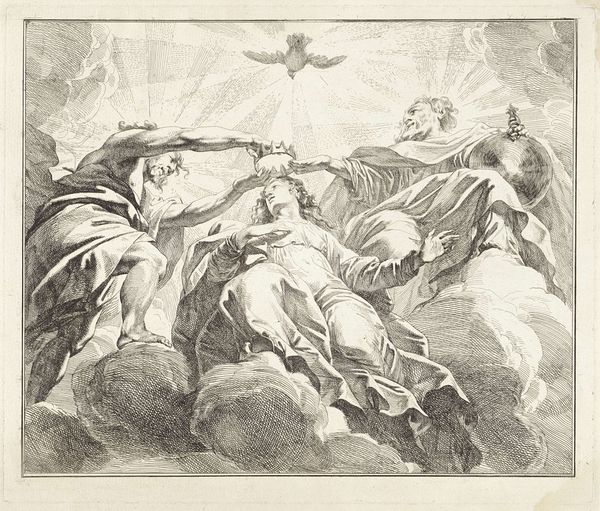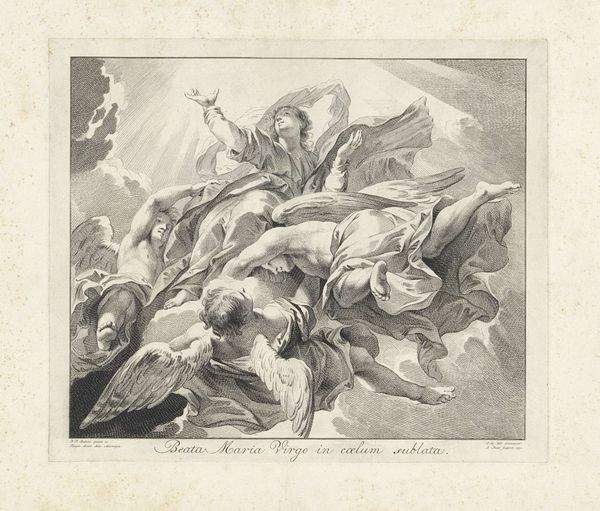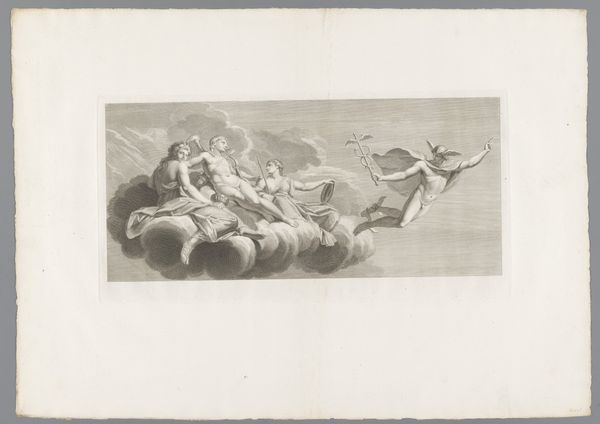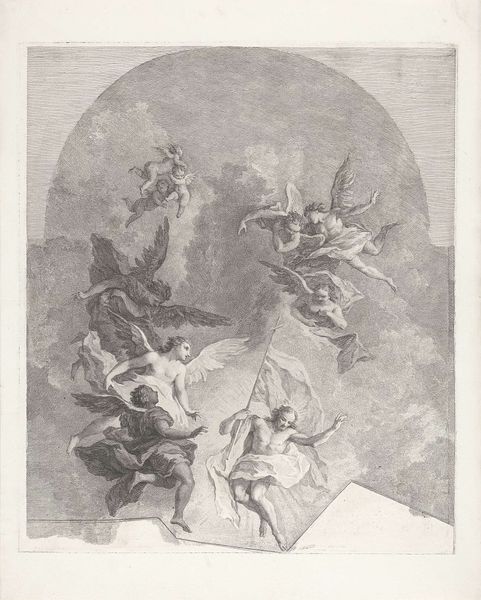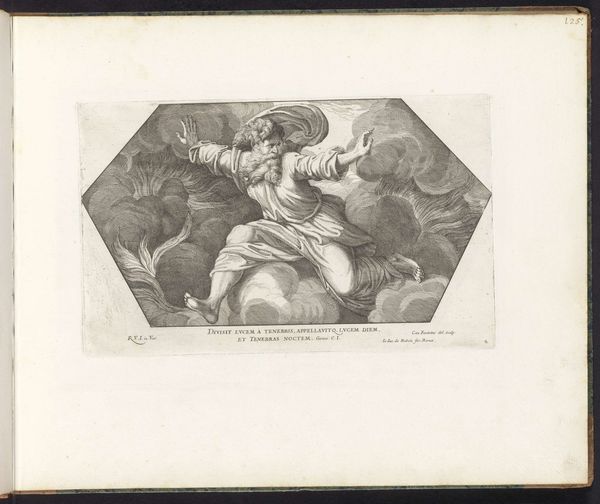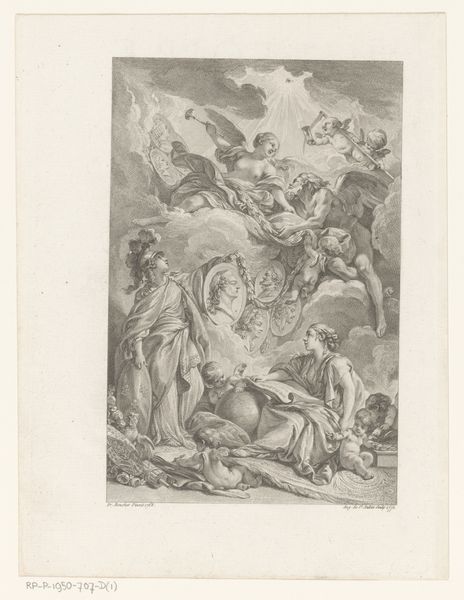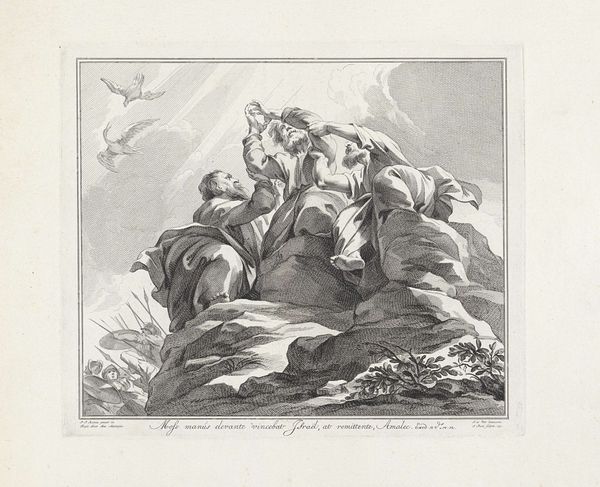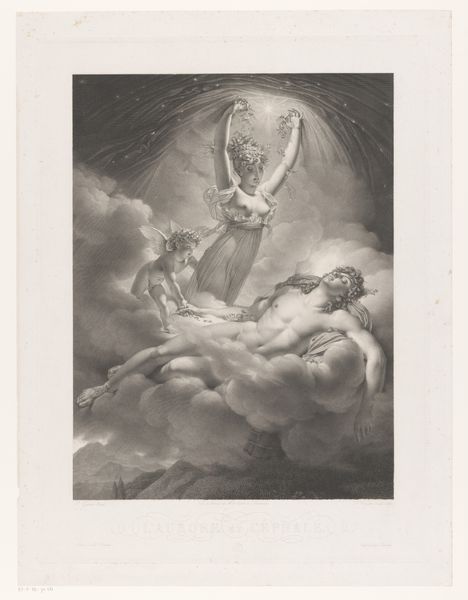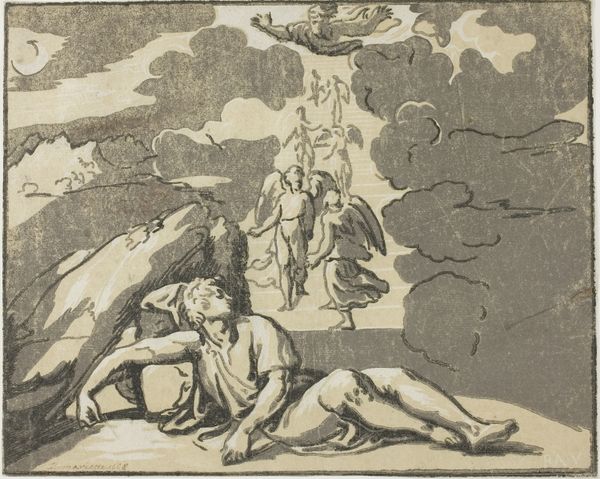
print, engraving
#
allegory
#
baroque
# print
#
figuration
#
line
#
history-painting
#
engraving
Dimensions: height 342 mm, width 400 mm
Copyright: Rijks Museum: Open Domain
Curator: This is "The Coronation of Mary," a 1751 engraving by Jan Punt, currently residing in the Rijksmuseum. Editor: My initial impression is one of airy lightness; the stark contrasts, delicate lines and swirling figures impart a sense of ethereal drama despite the rigidity of the medium. Curator: It's fascinating to consider the social and material conditions that led to a work like this. Engravings, of course, were crucial for disseminating imagery. Punt's skill allowed for relatively widespread circulation of a distinctly Baroque sensibility to wider audiences. Editor: Indeed. Note how the composition employs classical devices – the balanced figures of God and Christ mirrored in their action, the soft focus on the central subject to draw the eye. Also, observe the sharp contrast achieved with light and shadow. Curator: Absolutely. I see a deliberate effort to render the divine tangible, perhaps to legitimize certain societal norms. Engravings, while seemingly reproducible, demanded skilled labor, impacting not just distribution but also cultural perception. Consider the networks involved: papermakers, ink producers, print sellers. Editor: The engraving process itself, however, seems to disappear within the final print. What remains is the sharp image which communicates clear symbolic meaning with ease. It's as if the allegorical language bypasses material process. Curator: Not entirely, I’d argue. Understanding that these prints circulated widely influences our interpretation. These images become tools shaping beliefs about divine power. The relative affordability put these narratives in the hands of merchants, craftspeople. It reinforces cultural values through mass consumption. Editor: I can't disagree with that, the ubiquity of image always influences meaning. But when I look at the faces of God and Christ crowning Mary, the exquisite play of light and shadow seems so clearly about its intrinsic beauty – it's what resonates with me as a viewer. Curator: I respect that interpretation. To me, the lasting importance lies in how prints like these served as active agents, fostering and consolidating social order through images manufactured for popular consumption. Editor: It strikes me that it functions in both ways, the physical making, purpose and the abstract spiritual world can somehow merge when you view it like this.
Comments
No comments
Be the first to comment and join the conversation on the ultimate creative platform.

